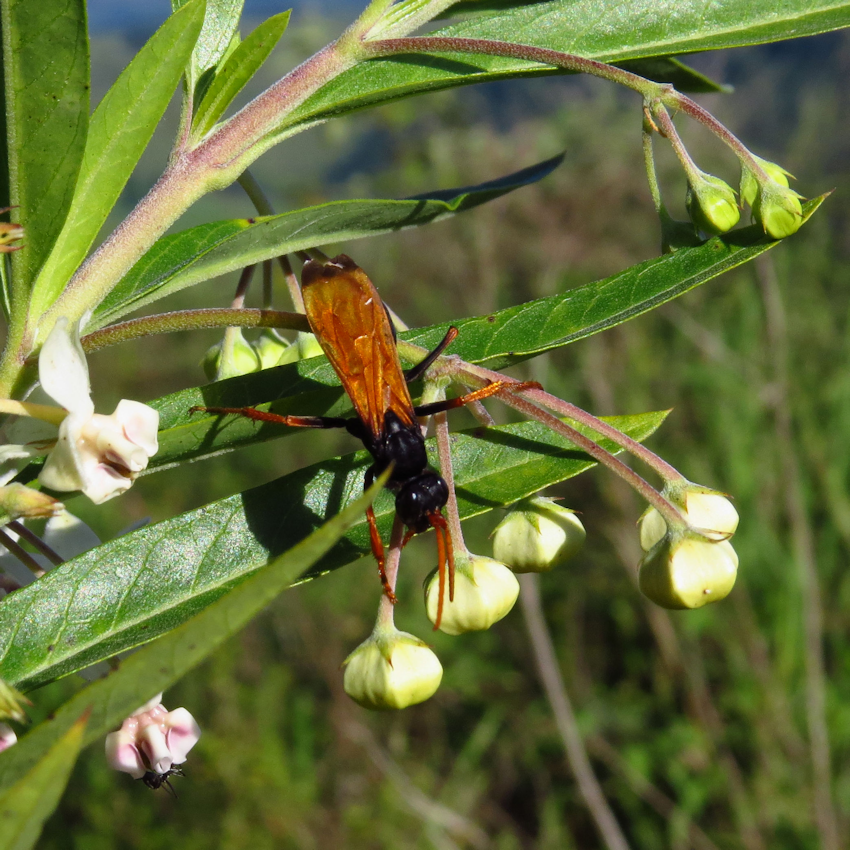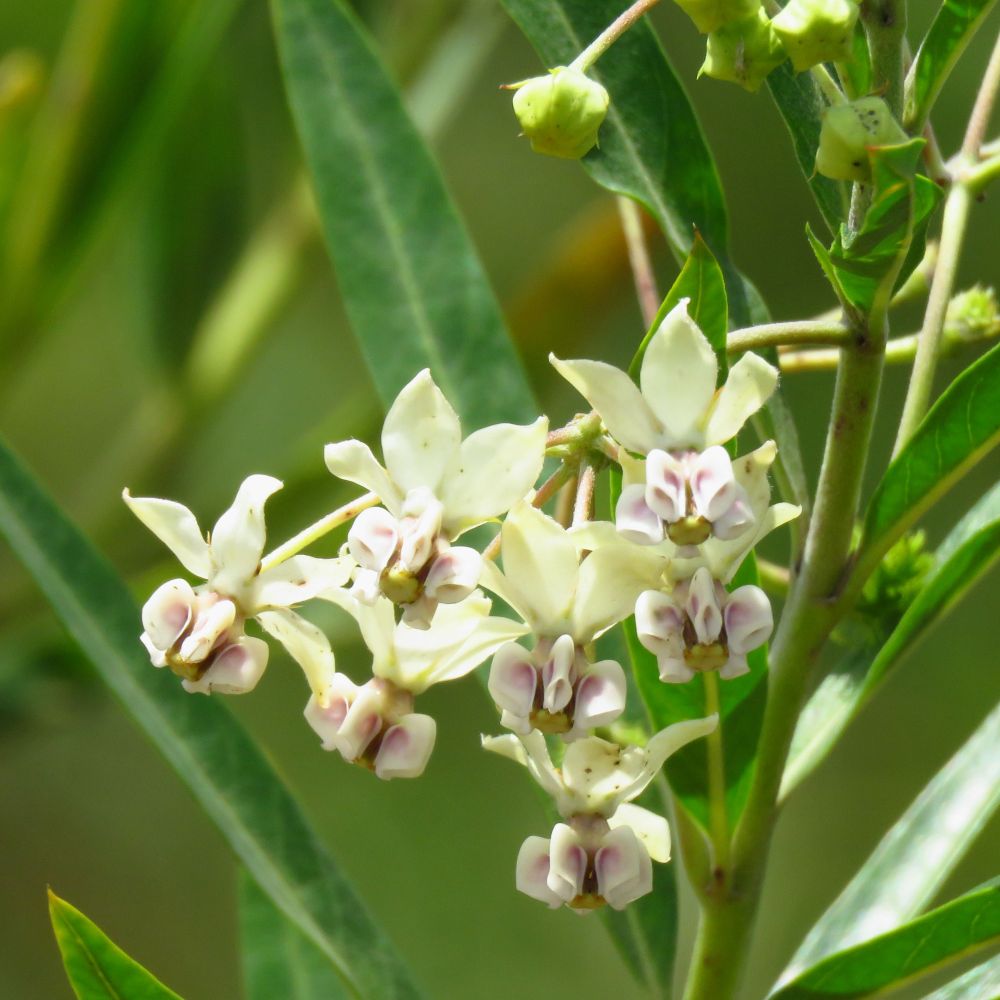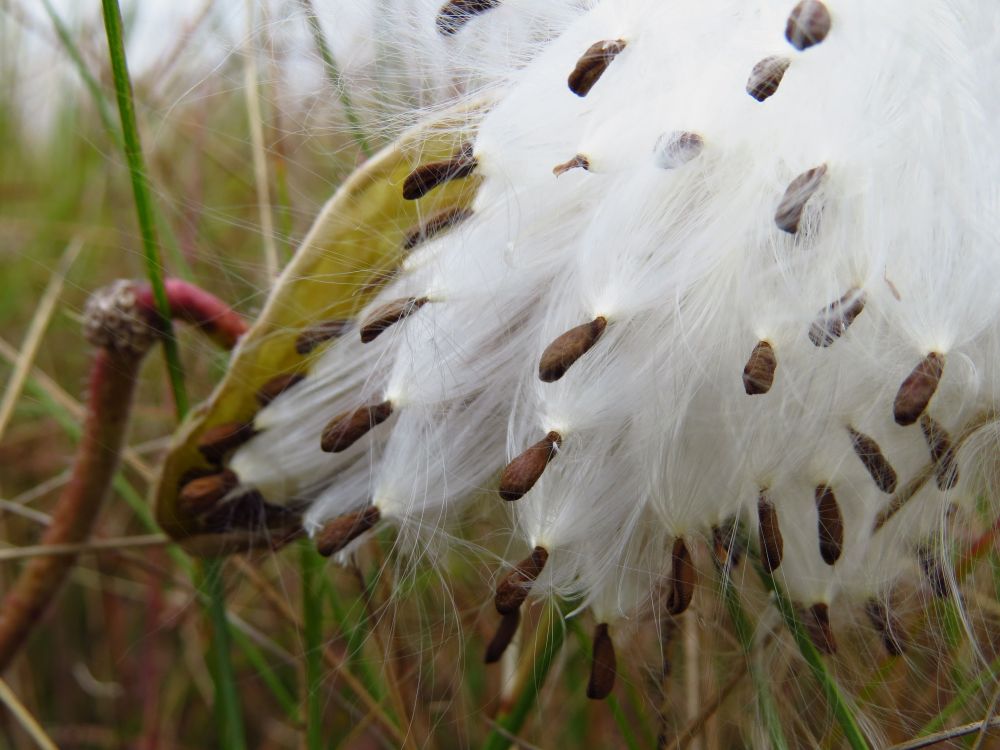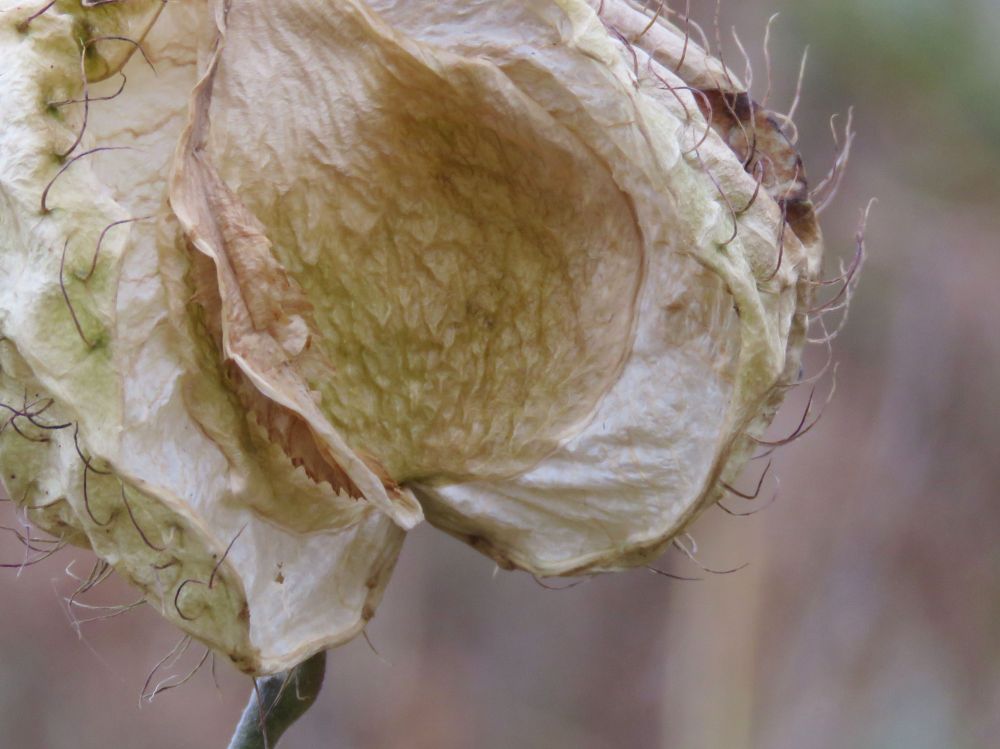Gomphocarpus physocarpus
Common Names: Milkweed, Balloon Cottonbush; Afrikaans: Balbossie; Sotho: Lebegane; Zulu: umsingalwesalukazi
This grassland plant thrives in disturbed areas, reaching 2m high and seeding freely. It has reputation as a weed in some areas. Certainly worth growing in a mixed border for the interest and height it adds, without taking up too much space, and for the many insects and butterflies it attracts. It is the host plant for the African Monach butterfly.

The stem exudes milky latex, common to all of the Milkweed family, Asclepiadaceae. Creamy flowers are borne in drooping clusters, among the long narrow leaves, throughout the year.

‘Balloon cottonbush’ perfectly describes this shrub which, even while it is flowering, is covered in balloon-like balls stuffed with silky hairs attached to the seeds. The fruit is a very interesting – pale green covered in soft spines.

The inflated fruits burst open to release the dark seeds which are carried off in the wind attached to cotton-like hairs. White-eyes and mannikins collect the fluff to line their nests.

Apparently, the fibrous stems are traditionally used to sew isidwaba, the traditional leather skirt of elder Zulu women, thus the name usingalwesalukazi. Although reportedly poisonous, the leaves are traditionally used to relieve headaches and the roots to treat stomach ache.

I love the dainty beauty of the flowers and also been fascinated by the spikey ‘balloons’, as always you give a beautifully illustrated and informative account of our lovely flowers Nikki, thank you! xxx
LikeLiked by 1 person
Thanks Christeen, for always engaging and saying the nicest things. Been trying hard to grow these in our garden, but not having much luck. Think the environment is too luxurious!
LikeLiked by 1 person
They popped up unexpectedly one year on the edge of the garden, all by themselves, and have never reappeared! xxx
LikeLiked by 1 person
One has popped up on our verge in between the aloes, so will just have to enjoy it there.
LikeLiked by 1 person